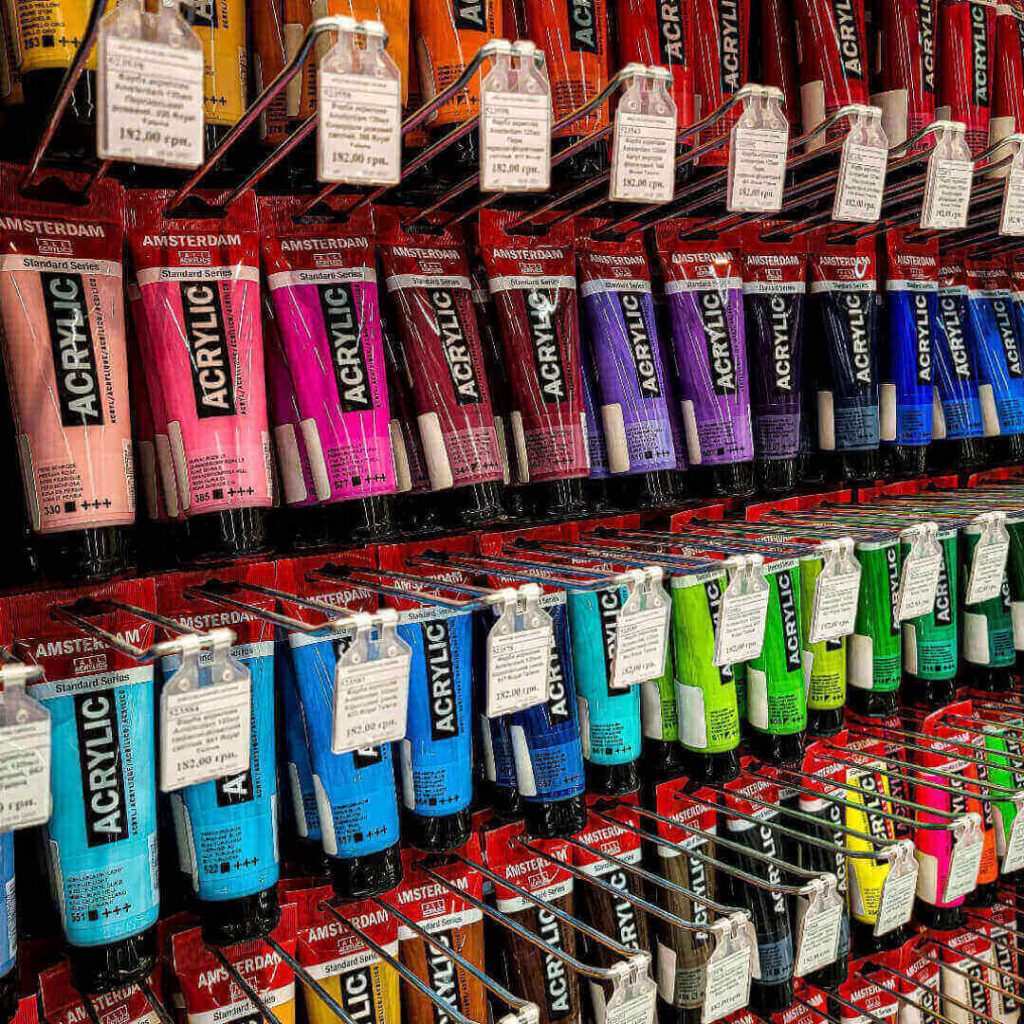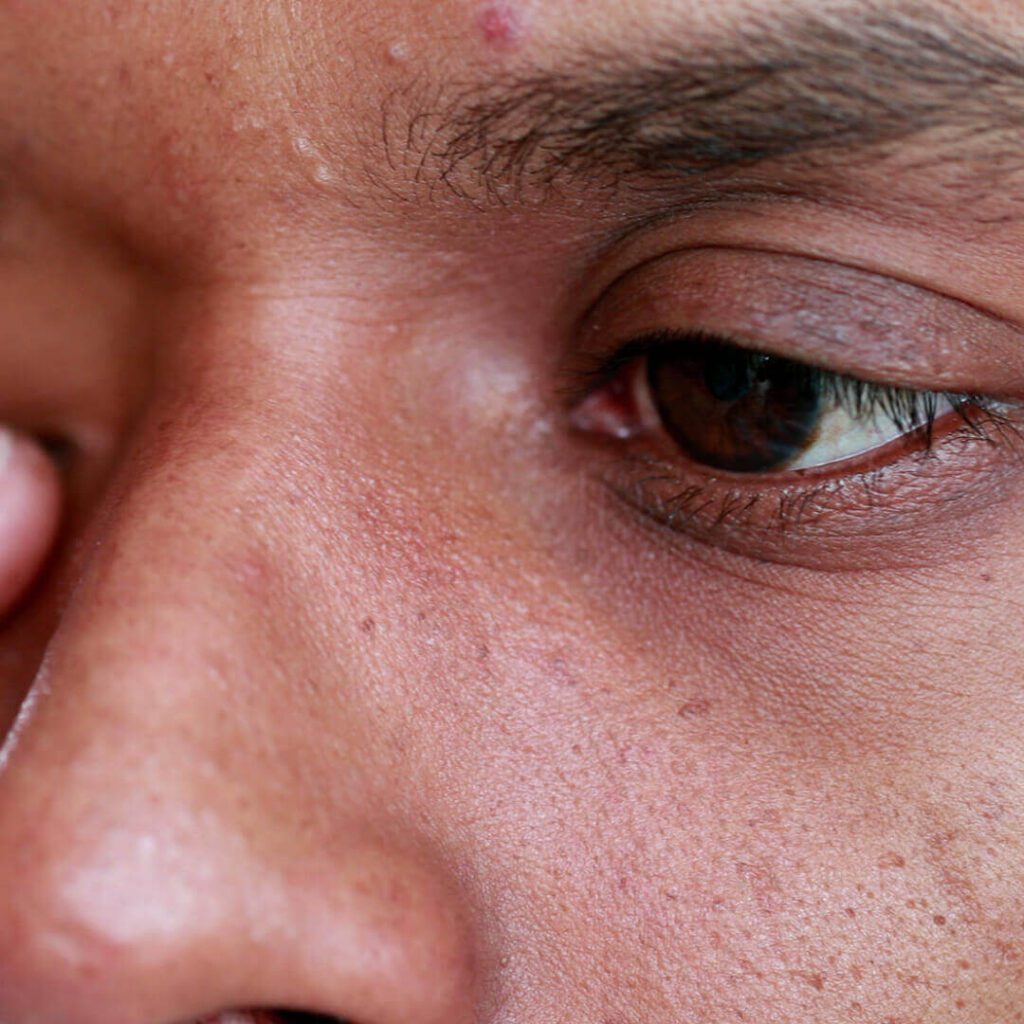Acrylic paint has become increasingly popular among artists, crafters, and even children due to its versatility, affordability, and range of vibrant colors. However, there is still a lot of confusion surrounding the safety of acrylic paint, mainly whether it is toxic.
The good news is that acrylic paint is generally considered non-toxic when used as intended and when applied to surfaces such as canvas, paper, wood, or plastic. Acrylic paint is made from water-based acrylic polymer emulsions, which are generally safe and non-toxic.
Table of Contents
- Acrylic Paint Is Generally Not Toxic
- Artists Should Still Use Precaution With Acrylic Paints
- Related Questions
Read on to learn more about acrylic paint and why the paint is non-toxic.
Acrylic Paint Is Generally Not Toxic
Acrylic paint is a versatile medium that has become increasingly popular among artists due to its vibrant colors, quick-drying time, and durability. One of the most significant advantages of using acrylic paint is that it is generally not toxic, making it a safer alternative to other paint types.

Unlike oil paints, which contain potentially harmful solvents, and watercolors that can be made with toxic pigments like cadmium, most acrylic paints are made with water-based emulsion polymers, making them non-toxic and environmentally friendly.
Many Acrylic Paints Meet Stringent ASTM Safety Standards
Many acrylic paints have been specifically formulated to meet stringent safety standards for artists, such as those set by the American Society for Testing and Materials (ASTM). These standards include the labeling of hazardous ingredients and the use of safe pigments.

The American Society for Testing and Materials (ASTM) is a non-profit organization that develops and publishes technical standards for materials, products, systems, and services. One of the areas in which ASTM sets standards is in producing art materials, including acrylic paints.
ASTM has developed a series of standards specifically for producing and labeling art materials, including acrylic paints. These standards are designed to ensure artists’ safety and provide accurate information about the materials they use.
ASTM Standards For Acrylic Paints Explained
One necessary ASTM standard for acrylic paints is D5098, which specifies the labeling requirements for artist paints. This standard requires that paints be labeled with the manufacturer’s name, the pigment identification number, the lightfastness rating, and hazardous ingredients.
Another ASTM standard for acrylic paints is D4236, which establishes the labeling requirements for all art materials. This standard requires that art materials, including acrylic paints, be labeled with information about any hazards, such as toxicity or flammability, and instructions for safe use.

ASTM also sets standards for the composition of artist paints. For example, ASTM D4302 specifies the maximum allowable levels of impurities, such as heavy metals, in artist paints. This standard helps to ensure that artist paints are free of harmful contaminants that could pose a risk to artists or the environment.
The American Society for Testing and Materials (ASTM) plays a vital role in ensuring the safety of artists who use acrylic paints by setting standards for producing and labeling these materials. These standards help artists make informed decisions about the materials they use and ensure that they can work with paints that are safe and free of harmful contaminants.
Artists Should Still Use Precaution With Acrylic Paints
However, while acrylic paint is generally safe, artists should still take precautions when working with it. Here are some ways that artists should be cautious when working with acrylic paints:
Avoid Prolonged Exposure
Prolonged exposure to the acrylic paints may cause skin irritation or respiratory problems, mainly if proper ventilation is not provided. The pigments used in some colors, particularly cadmium, cobalt, and chromium, can be harmful if inhaled or ingested in large amounts.
Make sure you work with the paints in an adequately ventilated room. Always use acrylic paint in a well-ventilated area, avoid eating or drinking while painting, and keep acrylic paints out of reach of children and pets.
Do Not Ingest Any Paints Or Get In The Eyes
It is also essential to avoid ingesting the paint or getting it in your eyes or on your skin. If you accidentally get acrylic paint on your skin, you may experience irritation or a mild allergic reaction.

In this case, washing the affected area with soap and water is essential. If you experience more severe symptoms, such as difficulty breathing or a rash, immediately seek medical attention.
Do Not Use On The Skin
Another essential thing to remember is that acrylic paint is not intended for use on the skin, as it is not formulated to be safe for this purpose. While it may be tempting to use acrylic paint as a substitute for face paint, doing so can put you at risk for skin irritation, allergic reactions, or even toxic exposure.

Instead, it is best to use special face paints that are designed to be safe and non-toxic for use on the skin, and never use acrylic paint for that purpose.
Acrylic paint is generally not toxic and is an excellent choice for artists looking for a secure and versatile medium. However, when working with this popular medium, artists should still take the necessary precautions to protect their health and safety.
Unlike oil paints containing toxic solvents like turpentine, acrylic paints can be cleaned with soap and water. So they are easy to paint to use and are also generally non-toxic paints.
Anita Louise Art is dedicated to art education, great artists, and inspiring others to find and create their art. We love art that uplifts and inspires. #ArtToMakeYouSmile! #ArtToMakeYouHappy!
If you are interested to see any of my art, you can find out more by clicking here. If you are interested in what inspires me and my paintings, you can discover more by clicking here.
We have a free newsletter and would love you to be part of our community; you can subscribe to the newsletter by clicking here. If you have any questions, I would be happy to talk to you any time. You can reach me, Anita, by clicking here.
Subscribe to our Anita Louise Art YouTube Channel filled with great videos and information by clicking here.
Related Questions
What Is The Difference Between Fine Arts And Visual Arts?
Fine art is a broad term used to describe many different types of art; one of the arts under the umbrella of fine art is visual arts. Fine arts can include arts such as music, theatre, dance, literature, and art forms. In contrast, Visual art is about only visual arts such as painting, sculpture, or filmmaking.
By clicking here, you can discover more by reading What Is The Difference Between Fine Arts and Visual Arts?
Is Procreate Easier Than Photoshop? What One Should An Artist Learn?
Procreate is a much easier computer program to learn than Photoshop, especially if you are new to the Adobe program. The Procreate program is a great computer program to lay out your artwork before painting on the canvas. Photoshop can also design your artwork, but as it is a more robust program than Procreate, it will take much longer to master.
You can discover more by reading Is Procreate Easier Than Photoshop? What One Should An Artist Learn? by clicking here.
Where Did Art Come From?
Many historians believe art started first in Africa; many ancient forms of art have been found worldwide. Cavemen art is some of the earliest forms of art. Many cultures put art on their bodies through tattooing and other art forms.
By clicking here, you can discover more by reading Where Did Art Come From?

